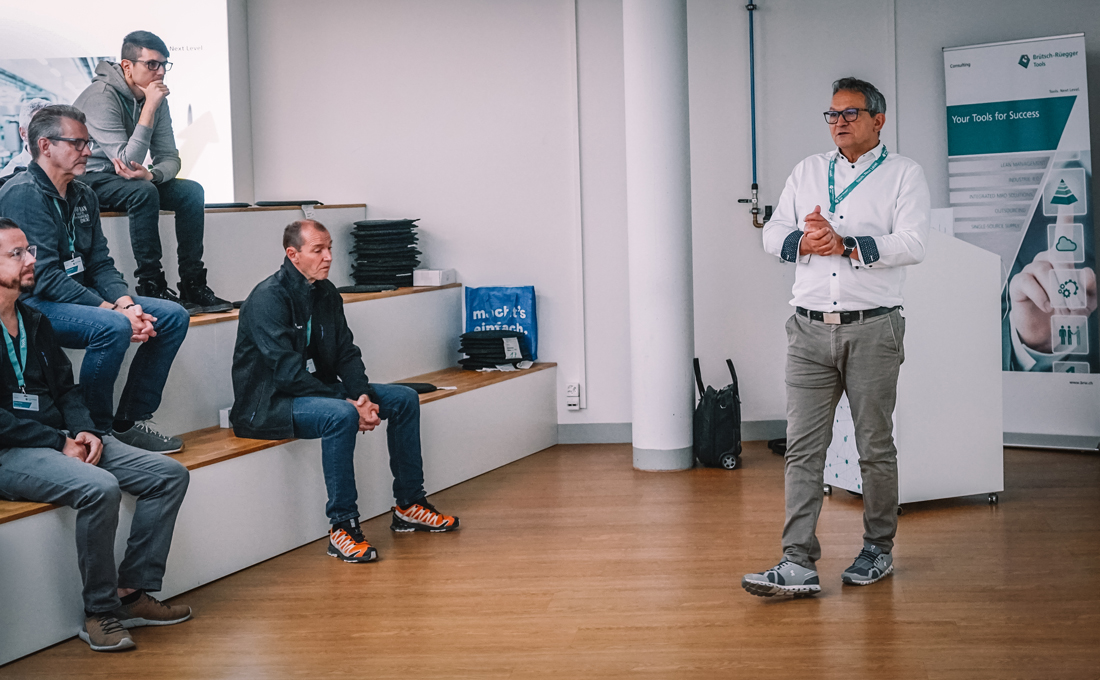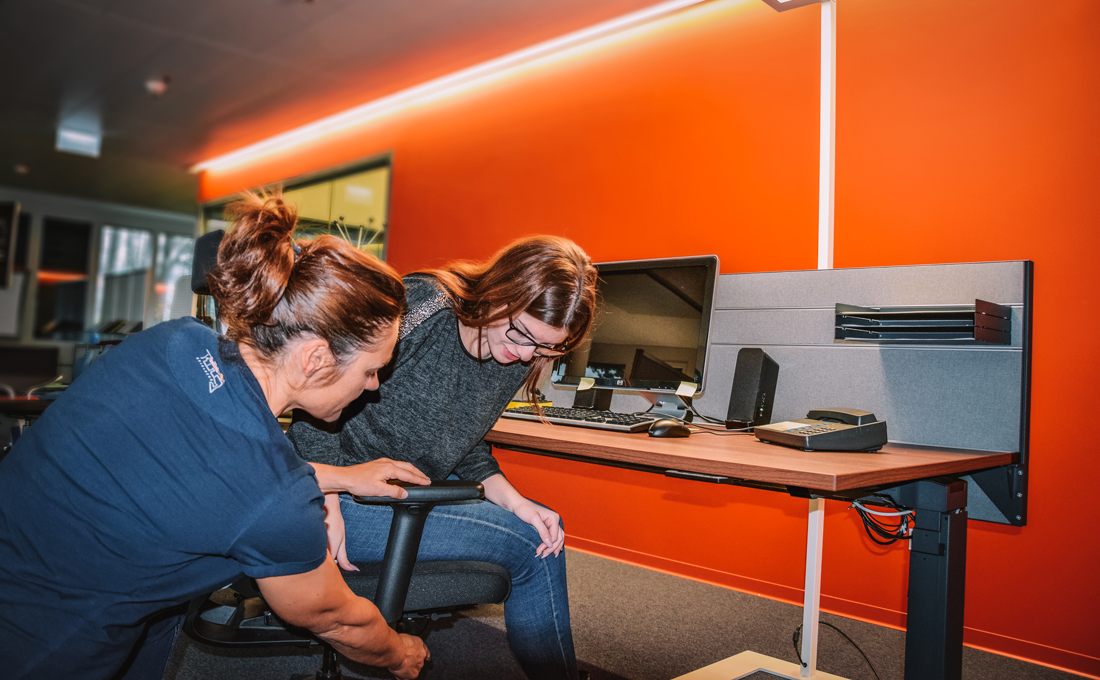Because ergonomics matters at every level
Health is the most valuable asset. This is common knowledge at Abbott Switzerland: The company develops a range of products to improve people's quality of life, including devices such as blood pumps for the treatment of cardiovascular diseases. It is natural that the health and well-being of its own workforce would play a key role at a company such as Abbott Switzerland. You can find out more about the company in the customer portrait in this issue of ToolNews. "This is why we attach great importance to ergonomics, because we have also set very high standards in this field", explains Lea Stutz, EHS specialist at Abbott Switzerland. And it was in this important area specifically that support was sought last year from the specialists at Brütsch/Rüegger Tools.
Lea Stutz took the first step towards collaboration through online research. "First, I got an idea of the various offers that were available. Then, I contacted the different providers and asked them to explain their services to me." Ultimately, she chose the Learning Centre for Ergonomics and Workplace Design (LEA) from Brütsch/Rüegger Tools because she was impressed by the multi-faceted offer. Abbott Switzerland decided to ask Head of the LEA, Reto Gruber, to perform an "ergo-check" of the production process. They also took part in a two-day training course led by the ergonomics expert.
Relevant ergonomics expertise concentrated on the scene
Regardless of company size or the department in question, there are various advantages to optimal workplace design: Whether in the office, logistics or manufacturing — ergonomic workplaces promote the health and well-being of employees and ensure that workflows are smoother. That's why the experts at Brütsch/Rüegger Tools pass on their important theoretical and practical knowledge gained from every sector at the Learning Centre for Ergonomics and Workplace Design (LEA). The one-day, practical workshop comprises seven topic areas: administration, development, manufacturing, logistics, assembly, quality inspection and packaging. During each topic, workflows are defined and examined and optimisations are revealed. The focus is on ergonomics, the fatigue-free, high-performance work that results from it and its high cost-effectiveness. And best of all: On request, the LEA can also visit your company to implement the principles of ergonomics directly on site. Click here to find out more.
Information
Mr Reto Gruber
Tel: +41 44 736 63 24
Fax: +41 44 736 63 00
Mail: reto.gruber@brw.ch
Almost like the doctor
What exactly is an ergo-check? "You can think of it almost like a health check by a doctor, in which we measure the vital data of the customer's operations in terms of ergonomics", explains Head of the LEA, Reto Gruber. In the case of Abbott Switzerland, a closer inspection was performed of the company's production department — directly on site, of course. Among other things, a hazard matrix was created. This involves assigning potential risk factors within a company to four different categories of risk (person, activity, workplace and environment). "This allows us to systematically record and analyse the situation on site", says Gruber. In the "activity" area, for example, we look at which tools are used in production, how the processes are designed and how much concentration the individual work steps require.
By recording and evaluating these points, Reto Gruber and his team gain valuable insight into the way a department works together — and can therefore quickly identify potential for improvement. "We really go deep into the matter so that we can make a clear statement about where the cause of a problem lies." Extremely practical: Gruber and his team also include aspects of "operational excellence" in their analysis. This concerns topics such as leaner processes and increased efficiency. In addition to production, this approach is also worthwhile for logistics, administration or engineering within a company.
Training the employees
Once the production department had undergone the ergo-check, those leading the project at Abbott Switzerland received a detailed written report on the current situation, naturally including recommendations for action. "This was a valuable means of orientation for us", says Lea Stutz. A two-day workshop was also held, during which the results of the check were deepened and the employees were made aware of the importance of an ergonomic working method. To this end, Reto Gruber made live adjustments to office workplaces at Abbott Switzerland together with the staff. "We really went from office to office, examined everything and corrected problems right there and then", says Gruber.
Among other things, this involved the ideal adjustment of desk heights, finding the appropriate screen angle and setting up optimal illumination of the work surface. "Because if these factors are not well suited to the individual, sooner or later discomfort, loss of performance or even absences will occur." Of course, a person can adjust and optimise these things on their own, but as Lea Stutz points out: "For employees, there is an enormous difference between calling in an external specialist and just handing them a brochure from the health insurance company."
As a result, Lea Stutz reflects positively on the ergo-check and the training led by Reto Gruber. "We found the analysis to be very precise and the content conveyed in the training to be really practical." The workshop in particular requires a certain amount of organisational effort, which is why the event has to be well planned beforehand. But it is worth it: "I would therefore definitely recommend the ergo-check."
Would you like to reap the rewards of improved ergonomics as well? Or would you like more information about the ergo-check? Then we look forward to hearing from you.



